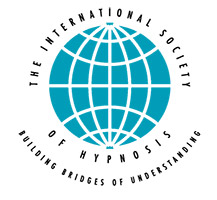
Permanent Alert with no specific reason
Generalized anxiety disorder (GAD) is an anxiety disorder that is characterized by excessive, uncontrollable and often irrational worry about everyday things that is disproportionate to the actual source of worry.
This excessive worry often interferes with daily functioning, as individuals suffering GAD typically anticipate disaster, and are overly concerned about everyday matters such as health issues, money, death, family problems, friend problems, relationship problems or work difficulties. Individuals often exhibit a variety of physical symptoms, including fatigue, fidgeting, headaches, nausea, numbness in hands and feet, muscle tension, muscle aches, difficulty swallowing, bouts of difficulty breathing, difficulty concentrating, trembling, twitching, irritability, agitation, sweating, restlessness, insomnia, hot flashes, and rashes and inability to fully control the anxiety (ICD-10). These symptoms must be consistent and on-going, persisting at least six months, for a formal diagnosis of GAD to be introduced.
Epidemiology
The usual age of onset is variable - from childhood to late adulthood, with the median age of onset being approximately 31. Most studies find that GAD is associated with an earlier and more gradual onset than the other anxiety disorders.
Women are two to three times more likely to suffer from generalized anxiety disorder than men, although this finding appears to be restricted to only developed countries, the spread of GAD is somewhat equal in developing nations. GAD is also common in the elderly population.
Potential causes
Some research suggests that GAD may run in families, and it may also grow worse during stress. GAD usually begins at an earlier age and symptoms may manifest themselves more slowly than in most other anxiety disorders. Some people with GAD report onset in early adulthood, usually in response to a life stressor. Once GAD develops, it can be chronic, but can be managed, if not all-but-alleviated, with proper treatment.
Substance induced
Long-term use of benzodiazepines can worsen underlying anxiety. with evidence that reduction of benzodiazepines can lead to a lessening of anxiety symptoms. Similarly, long-term alcohol use is associated with anxiety disorders, with evidence that prolonged abstinence can result in a disappearance of anxiety symptoms.
In one study in 1988–90, illness in approximately half of patients attending mental health services at British hospital psychiatric clinic, for conditions including anxiety disorders such as panic disorder or social phobia, was determined to be the result of alcohol or benzodiazepine dependence. In these patients, anxiety symptoms, while worsening initially during the withdrawal phase, disappeared with abstinence from benzodiazepines or alcohol. Sometimes anxiety pre-existed alcohol or benzodiazepine dependence but the dependence was acting to keep the anxiety disorders going and often progressively making them worse. Recovery from benzodiazepines tends to take a lot longer than recovery from alcohol but people can regain their previous good health.
Neurology
Generalized anxiety disorder has been linked to disrupted functional connectivity of the amygdala and its processing of fear and anxiety. Sensory information enters the amygdala through the nuclei of the basolateral complex (consisting of lateral, basal, and accessory basal nuclei). The basolateral complex processes sensory-related fear memories and communicate their threat importance to memory and sensory processing elsewhere in the brain such as the medial prefrontal cortex and sensory cortices. Another area the adjacent central nucleus of the amygdala that controls species-specific fear responses its connections brainstem, hypothalamus, and cerebellum areas. In those with generalized anxiety disorder these connections functionally seem to be less distinct and there is greater gray matter in the central nucleus. Another difference is that the amygdala areas have decreased connectivity with the insula and cingulate areas that control general stimulus salience while having greater connectivity with the parietal cortex and prefrontal cortex circuits that underlie executive functions. The latter suggests a compensation strategy for dysfunctional amygdala processing of anxiety. This is consistent with cognitive theories that suggest the use in this disorder of attempts to reduce the involvement of emotions with compensatory cognitive strategies.
Diagnosis
DSM-IV-TR criteria
DSM-IV-TR diagnostic criteria for generalized anxiety disorder are as follows:
A. Excessive anxiety and worry (apprehensive expectation), occurring more-days-than-not for at least 6 months, about a number of events or activities (such as work or school performance).
B. The person finds it difficult to control the worry.
C. The anxiety and worry are associated with three (or more) of the following six symptoms (with at least some symptoms present for more-days-than-not for the past 6 months).
1. restlessness or feeling keyed up or on edge
2. being easily fatigued
3. difficulty concentrating or mind going blank
4. irritability
5. muscle tension
6. sleep disturbance (difficulty falling or staying asleep, or restless unsatisfying sleep)
D. The focus of the anxiety and worry is not confined to features of other Axis I disorder (such as social phobia, OCD, PTSD etc.)
E. The anxiety, worry, or physical symptoms cause clinically significant distress or impairment in social, occupational, or other important areas of functioning.
F. The disturbance is not due to the direct physiological effects of a substance (e.g., a drug of abuse, a medication) or a general medical condition (e.g., hyperthyroidism), and does not occur exclusively during a mood disorder, psychotic disorder, or a pervasive developmental disorder.
ICD-10 criteria
F41.1 Generalized anxiety disorder
Note: For children different criteria may be applied.
A. A period of at least six months with prominent tension, worry and feelings of apprehension, about every-day events and problems.
B. At least four symptoms out of the following list of items must be present, of which at least one from items (1) to (4).
Autonomic arousal symptoms
(1) Palpitations or pounding heart, or accelerated heart rate.
(2) Sweating.
(3) Trembling or shaking.
(4) Dry mouth (not due to medication or dehydration).
Symptoms concerning chest and abdomen
(5) Difficulty breathing.
(6) Feeling of choking.
(7) Chest pain or discomfort.
(8) Nausea or abdominal distress (e.g. churning in stomach).
Symptoms concerning brain and mind
(9) Feeling dizzy, unsteady, faint or light-headed.
(10) Feelings that objects are unreal (derealization), or that one's self is distant or "not really here" (depersonalization).
(11) Fear of losing control, going crazy, or passing out.
(12) Fear of dying.
General symptoms
(13) Hot flushes or cold chills.
(14) Numbness or tingling sensations.
Symptoms of tension
(15) Muscle tension or aches and pains.
(16) Restlessness and inability to relax.
(17) Feeling keyed up, or on edge, or of mental tension.
(18) A sensation of a lump in the throat, or difficulty with swallowing.
Other non-specific symptoms
(19) Exaggerated response to minor surprises or being startled.
(20) Difficulty in concentrating, or mind going blank, because of worrying or anxiety.
(21) Persistent irritability.
(22) Difficulty getting to sleep because of worrying.
C. The disorder does not meet the criteria for panic disorder (F41.0), phobic anxiety disorders (F40.-), obsessive-compulsive disorder (F42.-) or hypochondriacal disorder (F45.2).
D. Most commonly used exclusion criteria: not sustained by a physical disorder, such as hyperthyroidism, an organic mental disorder (F0) or psychoactive substance-related disorder (F1), such as excess consumption of amphetamine-like substances, or withdrawal from benzodiazepines.
Treatment
A meta-analysis of 35 studies shows cognitive behavioral therapy to be more effective in the long term than pharmacologic treatment (drugs such as SSRIs), and while both treatments reduce anxiety, CBT is more effective in reducing depression.
Cognitive behavioral therapy
Cognitive behavioral therapy (CBT) is a psychological method of treatment for GAD that involves a therapist working with the patient to understand how thoughts and feelings influence behavior. The goal of the therapy is to change negative thought patterns that lead to the patient's anxiety, replacing them with positive, more realistic ones. Elements of the therapy include exposure strategies to allow the patient to gradually confront their anxieties and feel more comfortable in anxiety-provoking situations, as well as to practice the skills they have learned. CBT can be used alone or in conjunction with medication.
CBT usually helps one third of the patients substantially, whilst another third does not respond at all to treatment.
SSRIs
Pharmaceutical treatments for GAD include selective serotonin reuptake inhibitors (SSRIs), which are antidepressants that influence brain chemistry to block the reabsorption of serotonin in the brain. SSRIs are mainly indicated for clinical depression, but are also very effective in treating anxiety disorders. Common side effects include nausea, sexual dysfunction, headache, diarrhea, constipation, among others. Common SSRIs prescribed for GAD include:
• fluoxetine (Prozac, Sarafem)
• paroxetine (Paxil, Aropax)
• escitalopram (Lexapro, Cipralex)
• sertraline (Zoloft)
Pregabalin
Pregabalin (Lyrica) acts on the voltage-dependent calcium channel in order to decrease the release of neurotransmitters such as glutamate, noradrenaline and substance P. Its therapeutic effect appears after 1 week of use and is similar in effectiveness to lorazepam, alprazolam and venlafaxine but pregabalin has demonstrated superiority by producing more consistent therapeutic effects for psychic and somatic anxiety symptoms. Long-term trials have shown continued effectiveness without the development of tolerance and additionally unlike benzodiazepines it does not disrupt sleep architecture and produces less severe cognitive and psychomotor impairment; it also has a low potential for abuse and dependence and may be preferred over the benzodiazepines for these reasons.
Other drugs
- Psychotropic drugs
• Buspirone (BuSpar) is a serotonin receptor partial agonist, belonging to the azaspirodecanedione class of compounds.
• Duloxetine (Cymbalta)- SNRI - type antidepressant
• Imipramine (Tofranil) is a tricyclic antidepressant (TCA).
• Other tricyclic antidepressants - as clomipramine,etc. TCAs are thought to act on serotonin, norepinephrine, and dopamine in the brain.
• Venlafaxine (Effexor XR) is a serotonin-norepinephrine reuptake inhibitor (SNRI). SNRIs alter the chemistries of both norepinephrine and serotonin in the brain.
• Afobazole
• Some of MAO inhibitors - such as Moclobemide,rarely Nialamide
- Non-psychotropic drugs
• Propranolol (Inderal) - Sympatholytic, beta-adrenoblocker
• Clonidine – Sympatholytic
• Guanfacine – Sympatholytic
• Prazosin - Sympatholytic, alpha-adrenoblocker
Benzodiazepines
Benzodiazepines (or "benzos") are fast-acting hypnotic sedatives that are also used to treat GAD and other anxiety disorders. Benzodiazepines are prescribed for generalized anxiety disorder and show beneficial effects in the short term. The World Council of Anxiety does not recommend the long-term use of benzodiazepines because they are associated with the development of tolerance, psychomotor impairment, cognitive and memory impairments, physical dependence and a withdrawal syndrome. Side effects include drowsiness, reduced motor coordination and problems with equilibrioception.
Common benzodiazepines used to treat GAD include:
• alprazolam (Xanax, Xanax XR, Niravam)
• chlordiazepoxide (Librium)
• clonazepam (Klonopin)
• clorazepate (Tranxene)
• diazepam (Valium)
GAD and comorbid depression
In the National Comorbidity Survey (2005), 58 percent of patients diagnosed with major depression were found to have an anxiety disorder; among these patients, the rate of comorbidity with GAD was 17.2 percent, and with panic disorder, 9.9 percent. Patients with a diagnosed anxiety disorder also had high rates of comorbid depression, including 22.4 percent of patients with social phobia, 9.4 percent with agoraphobia, and 2.3 percent with panic disorder. For many, the symptoms of both depression and anxiety are not severe enough (i.e. are subsyndromal) to justify a primary diagnosis of either major depressive disorder (MDD) or an anxiety disorder. However, Dysthymic Disorder is the most prevalent comorbid diagnosis of GAD clients.
Patients can also be categorized as having mixed anxiety-depressive disorder, and they are at significantly increased risk of developing full-blown depression or anxiety.
Accumulating evidence indicates that patients with comorbid depression and anxiety tend to have greater illness severity and a lower treatment response than those with either disorder alone. In addition, social function and quality of life are more greatly impaired.
In addition to coexisting with depression, research shows that GAD often coexists with substance abuse or other conditions associated with stress, such as irritable bowel syndrome. Patients with physical symptoms such as insomnia or headaches should also tell their doctors about their feelings of worry and tension. This will help the patient's health care provider to recognize whether the person is suffering from GAD.








